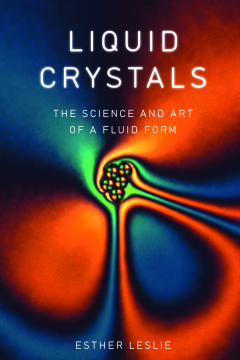
Additional Information
Book Details
Abstract
While it is responsible for today’s abundance of flat screens—on televisions, computers, and mobile devices—most of us have only heard of it in the ubiquitous acronym, LCD, with little thought as to exactly what it is: liquid crystal. In this book, Esther Leslie enlightens us, offering an accessible and fascinating look at—not a substance, not a technology—but a wholly different phase of matter.
As she explains, liquid crystal is a curious material phase that organizes a substance’s molecules in a crystalline form yet allows them to move fluidly like water. Observed since the nineteenth century, this phase has been a deep curiosity to science and, in more recent times, the key to a new era of media technology. In between that time, as Leslie shows, it has figured in cultural forms from Romantic landscape painting to snow globes, from mountaineering to eco-disasters, and from touchscreen devices to DNA. Expertly written but accessible, Liquid Crystals recounts the unheralded but hugely significant emergence of this unique form of matter.
Esther Leslie is professor of political aesthetics at Birkbeck, University of London. She is the author of many books and is, most recently, the editor and translator of Walter Benjamin’s On Photography, also published by Reaktion Books.
Table of Contents
| Section Title | Page | Action | Price |
|---|---|---|---|
| Cover\r | Cover | ||
| Liquid Crystals: The Science and Art of a Fluid Form\r | 3 | ||
| Imprint Page\r | 4 | ||
| Contents\r | 5 | ||
| Introduction: Slush\r | 7 | ||
| 1: Flowing Crystals\r | 23 | ||
| 2: Ice\r | 66 | ||
| 3: Snowflakes\r | 94 | ||
| 4: Blizzard\r | 122 | ||
| 5: Meltwater\r | 153 | ||
| 6: Liquid Crystal\r | 199 | ||
| 7: Sea Ice\r | 232 | ||
| Conclusion: Permafrost, Liquid Assets\r | 252 | ||
| References\r | 265 | ||
| Acknowledgements\r | 287 | ||
| Photo Acknowledgements\r | 289 | ||
| Index\r | 291 |
